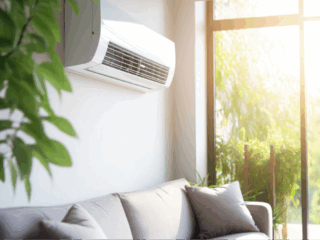
Regular roof inspections are more than a mere maintenance routine; they’re vital in safeguarding the integrity of your home. As your first line of defense against the elements, your roof demands attention and care.
Recognizing this, many homeowners turn to trusted experts like Southeast Roofing Consultants for guidance. These inspections play a crucial role in identifying minor issues before they escalate, helping to extend the lifespan of your roof and prevent expensive repairs.
Read on to understand roof inspections comprehensively and discover valuable insights that can save you time and money in the long run.
Identifying Common Roof Problems
A thorough understanding of common roof problems is crucial for effective roof maintenance. Regularly inspecting your roof can reveal various issues that, if addressed promptly, can prevent extensive damage and costly repairs.
Below are the most common issues to be aware of:
- Missing or damaged shingles: Look for broken, curled, or completely missing shingles. These are clear indicators of wear and tear and can lead to leaks and water damage.
- Leaks and water damage: Be vigilant for water stains on ceilings or walls inside your home. These signs often indicate leaks in the roof, which need immediate attention to prevent further damage.
- Moss and algae growth: Moss and algae can degrade shingles over time, leading to deterioration. Their growth often indicates trapped moisture and can result in leaks.
Recognizing these signs as potential issues and conducting regular inspections and timely interventions can minimize the risk of significant roof damage. Vigilance in spotting these common problems will help maintain the longevity and health of your roof, ensuring your home’s protection from the elements.

The Process Of A Roof Inspection
A systematic roof inspection approach is crucial for effectively detecting and addressing potential issues. Regular inspections aren’t just about spotting visible damage; they involve a comprehensive check of the roof’s overall condition.
Below is a detailed breakdown of the steps involved in a typical roof inspection:
- Visual inspection: Begin by examining the roof from the ground. Look for signs of damage, such as missing shingles, sagging, or any irregular structures in the roof.
- Surface check: Next, closely inspect the condition of the roofing material. Pay attention to the state of shingles, tiles, or metal panels. Look for cracks, rust, or any signs of wear and tear.
- Interior inspection: Finally, check the attic and interior ceilings for signs of leaks, water damage, or poor insulation. Look for water stains, mold, or dampness, indicating roof issues.
Remember that comprehensive roof inspections are essential for maintaining the health and longevity of your home. By thoroughly understanding and following each step, you can effectively prevent many common roofing issues, ensuring your home stays protected and secure.
Preventive Measures To Protect Your Roof
Proactive maintenance is essential in extending the life of your roof and avoiding costly repairs. It can significantly reduce the likelihood of roof damage and ensure your home remains protected. Moreover, well-maintained roofs can add curb appeal to your home, enhancing its overall appearance and market value.
Here are essential steps to include in your regular roof maintenance routine:
- Regular cleaning of gutters: Keep gutters free from leaves, twigs, and debris. Clogged gutters can lead to water backup and damage the roof and the home’s foundation. Ensuring gutters are clean and functioning properly is a simple yet effective way to protect your roof.
- Seasonal roof inspections: Conduct thorough inspections of your roof, particularly after harsh weather conditions like storms, snow, or extreme heat. This helps identify and address minor issues before they escalate.
- Prompt repairs of minor damages: Addressing small problems like missing shingles or minor leaks right away can prevent them from escalating into more significant issues. Delaying repairs can lead to more extensive and expensive damage.
These preventive measures can prolong your roof’s life, protect your home, and save money on future repairs. Regular maintenance is a small investment with significant long-term benefits for your roof’s condition.
When To Call A Professional
Knowing when to call a professional for a roof inspection can be just as crucial as the inspection itself. While homeowners can often handle regular checks and minor maintenance, there are certain situations where the expertise of a professional is essential.
Below are critical scenarios when it’s advisable to seek professional help:
- Significant damage or wear: If you notice extensive damage, such as large areas of missing shingles, major leaks, or visible sagging of the roof, it’s time to call in a professional. These issues indicate serious problems that require expert attention.
- Signs of structural issues: Structural problems, such as a visibly uneven roofline or significant buckling of roofing materials, warrant a professional assessment. Structural issues can compromise the safety of your home.
- Persistent leaks: While occasional, minor leaks might be manageable, recurrent or multiple leaks signal a deeper problem. A professional can accurately diagnose the source of the leaks and recommend the best course of action.

While regular maintenance is crucial, understanding when to enlist professionals is vital. They have the expertise and equipment to assess and address issues, ensuring your roof’s longevity and your home’s safety. Click here to get in touch with a roofing contractor.
Conclusion
Regular and thorough roof inspections are pivotal in maintaining your home’s safety and integrity. By being proactive in identifying common problems, understanding the inspection process, recognizing when to seek professional assistance, and implementing preventive measures, you can significantly enhance the lifespan and functionality of your roof. This diligent approach helps in averting potential disasters and ensures peace of mind, knowing your home is well-protected against the elements. Remember, the health of your roof is a critical component in the overall well-being of your home.





